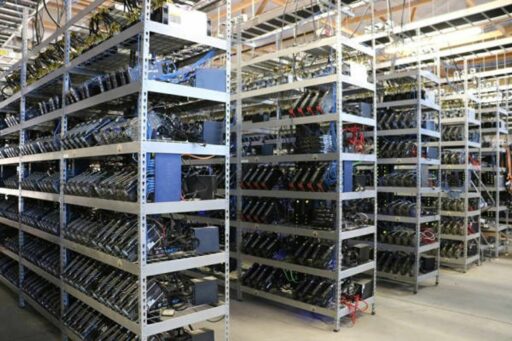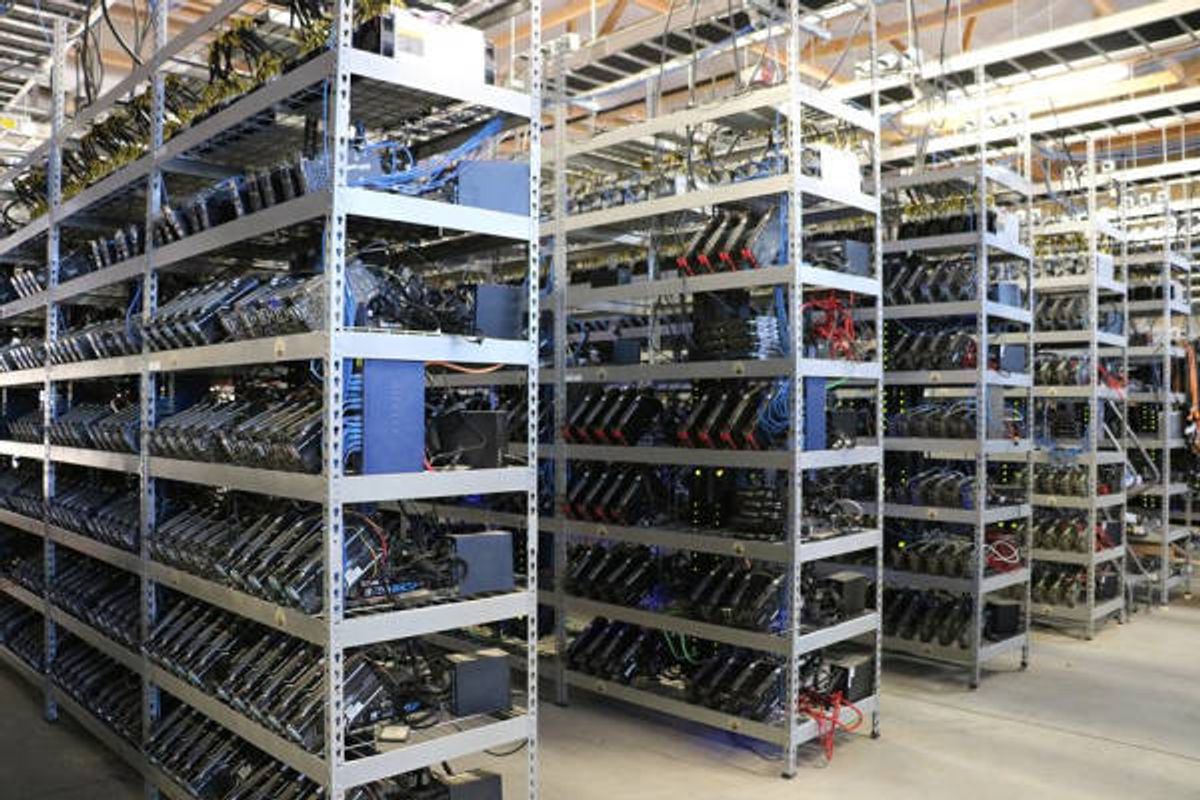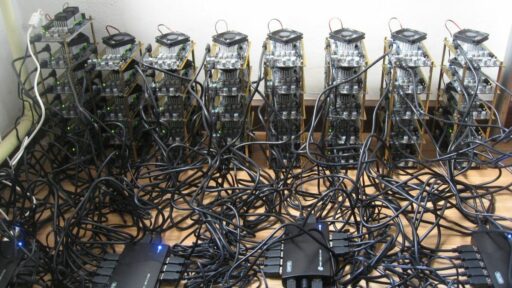As the cryptocurrency landscape continues to shift and grow in complexity, effective crypto mining strategies have become crucial for those looking to maximize their profits. In this article, we will explore the best crypto mining strategies as of March 2024, providing insights into the most profitable coins, the optimal mining hardware, and how to streamline your mining operations. Whether you are new to the mining scene or a seasoned veteran, these strategies will help you navigate the ever-changing world of cryptocurrency mining for maximum profit.
Key Takeaways
- Research and select profitable coins by analyzing factors such as mining difficulty, block rewards, and market demand to ensure the highest potential for profitability.
- Invest in the right mining hardware tailored to specific cryptocurrencies and algorithms, considering hash rate, energy efficiency, and cost to optimize returns.
- Maximize mining efficiency by enhancing hash power, managing electricity costs, and implementing effective cooling systems to reduce overheads.
- Choose between joining a mining pool or solo mining based on potential earnings, stability, and the benefits of shared resources versus independent operations.
- Stay informed about market trends and network difficulty changes, and be ready to adapt your mining strategies to maintain long-term profitability in the volatile crypto market.
Research and Select Profitable Coins

Which Crypto Mining Pays the Most?
Determining the most profitable cryptocurrency to mine is a dynamic challenge, as it fluctuates with market prices and mining difficulties. In recent times, coins with ASIC-resistant algorithms have emerged as profitable options due to lower entry costs compared to ASIC mining rigs. These coins are designed to be mined with GPUs, leveling the playing field for individual miners.
When considering profitability, it’s essential to look at both the current mining rewards and the potential monthly profits. Here’s a quick overview of some top contenders:
- Bitcoin (BTC): Despite the high competition and upcoming reward halving, Bitcoin remains a popular choice with significant rewards.
- Monero (XMR): Known for its privacy features, Monero utilizes an ASIC-resistant algorithm, making it a strong candidate for GPU miners.
While the landscape of crypto mining is ever-changing, staying informed and adaptable is crucial for maximizing earnings. Keep an eye on industry trends and legal considerations to ensure long-term success.
What’s the Best Crypto to Mine with a GPU?
When it comes to GPU mining, the best cryptocurrency to mine can vary based on several factors, including market price and mining difficulty. However, certain coins are known for being more GPU-friendly, especially those with ASIC-resistant algorithms. Coins such as Monero, Ravencoin, Vertcoin, and Grin are often highlighted as optimal for GPU miners due to their resistance to ASIC dominance, which can centralize mining power.
While the most profitable crypto to mine with a GPU can fluctuate, focusing on ASIC-resistant coins can provide a more level playing field for individual miners.
It’s crucial to balance power and performance when selecting a GPU-minable coin. This ensures that you’re not only optimizing hardware for efficient crypto mining but also choosing a cryptocurrency that could offer a competitive edge in terms of profitability. Here’s a quick list of factors to consider when picking the best GPU-minable crypto:
- Market price and potential for appreciation
- Mining difficulty and network hash rate
- Coin’s mining algorithm and its compatibility with your GPU
- Community and developer support
- Potential for future growth and use cases
How to Pick the Best Crypto to Mine
Choosing the right cryptocurrency to mine is a pivotal decision for maximizing profits in the mining landscape. Profitability is the cornerstone of mining success, and it’s essential to evaluate the potential rewards and monthly earnings of different cryptocurrencies. In 2024, the mining scene is ripe with opportunities, and sustainability, regulatory compliance, and tax implications are key to long-term success.
When selecting a cryptocurrency to mine, consider the following points:
- Market price and mining difficulty: These factors directly impact the profitability of mining a particular coin.
- Algorithm type: Opt for coins with ASIC-resistant algorithms to avoid high entry costs associated with ASIC mining rigs.
- Community and developer support: A strong community and active development can indicate a healthy, growing cryptocurrency.
It’s not just about the immediate returns; the best choice balances immediate profitability with sustainability and growth potential.
Remember, the most profitable crypto to mine can change rapidly, so staying informed on market trends and technological advancements is crucial.
Choose the Right Mining Hardware

Understanding Different Mining Algorithms
Cryptocurrency mining is a complex process that hinges on the use of specific mining algorithms. Each cryptocurrency has a designated algorithm, and understanding these is crucial for selecting the right mining hardware. For instance, Bitcoin uses the SHA-256 algorithm, which is known for its high processing power requirements.
Mining software plays a pivotal role in optimizing these algorithms for maximum efficiency. Popular mining programs like CGMiner and BFGMiner are lauded for their stability and ability to handle intensive usage. They support a range of hardware, including ASICs and FPGAs, which are tailored to specific mining algorithms.
It’s essential to match your mining hardware with the cryptocurrency’s algorithm to ensure optimal performance and profitability.
Here’s a brief overview of some common mining algorithms and the cryptocurrencies that use them:
- SHA-256: Used by Bitcoin, requires powerful ASIC miners.
- Scrypt: Utilized by Litecoin and other altcoins, can be mined with GPUs and ASICs.
- Ethash: Powers Ethereum mining, suitable for GPU miners.
- X11: Dash cryptocurrency uses this algorithm, which is compatible with both GPU and ASIC miners.
Comparing ASIC vs. GPU Mining
When venturing into the realm of cryptocurrency mining, one critical decision is choosing between ASIC (Application-Specific Integrated Circuit) and GPU (Graphics Processing Unit) mining. ASIC miners are designed for the sole purpose of mining cryptocurrencies, offering high hash rates and energy efficiency for specific coins. On the other hand, GPUs are versatile, capable of mining various cryptocurrencies and have the added benefit of being repurposed for other computing tasks or easier to resell.
| Hardware Type | Hash Rate | Energy Efficiency | Versatility |
|---|---|---|---|
| ASIC | High | High | Low |
| GPU | Moderate | Moderate | High |
While ASICs may offer superior performance for particular cryptocurrencies, GPUs provide flexibility and a lower entry barrier for new miners.
Ultimately, the choice between ASIC and GPU mining will hinge on factors such as budget, electricity costs, and the desired level of commitment to mining. ASICs are the go-to for dedicated miners seeking maximum efficiency, whereas GPUs are favored for their competitive edge in mining multiple cryptos and ease of resale.
Evaluating Hash Rate, Energy Efficiency, and Cost
When venturing into crypto mining, evaluating the hash rate, energy efficiency, and cost is crucial for ensuring profitability. A higher hash rate means solving blocks more quickly, which can lead to better results in the long run. However, this must be balanced against the initial investment and the ongoing operational costs, primarily electricity consumption.
Miners must weigh electricity costs against hash rate to ensure that their mining operation remains profitable over time.
Here’s a simplified breakdown to consider when evaluating mining hardware:
- Hash Rate: The number of calculations your hardware can perform per second.
- Energy Efficiency: The amount of electricity your hardware consumes relative to its hash rate.
- Cost: The upfront purchase price of the hardware and the ongoing electricity expenses.
Remember, mining difficulty, which increases with more miners joining the network, also affects profitability. It’s essential to assess current difficulty levels and anticipate changes to make informed decisions about your mining operations.
Optimize Mining Operations for Efficiency
Maximizing Hash Power While Minimizing Costs
To achieve the delicate balance of maximizing hash power while minimizing costs, a strategic approach is essential. Regular monitoring of hardware performance, temperature, and power consumption is key to maintaining an efficient mining operation. Implementing cooling solutions not only prevents overheating but also contributes to reduced energy consumption.
By optimizing mining software settings and configurations, miners can enhance their hash rate and overall efficiency without incurring additional costs.
Additionally, it’s important to consider the trade-off between electricity consumption and hash rate. Selecting the right machinery that offers high performance with low power usage is crucial. ASICs, for instance, are known for delivering robust performance with comparatively lower electricity demands. Here’s a quick checklist to ensure you’re on the right track:
- Regularly monitor and adjust hardware settings
- Implement effective cooling solutions
- Optimize mining software configurations
- Evaluate electricity costs versus hash rate
- Invest in high-efficiency mining hardware like ASICs
Remember, these changes are not just about immediate gains but also about extending the operational life of your expensive mining equipment and ensuring long-term profitability.
The Importance of Cooling Systems
Effective cooling systems are essential in crypto mining to prevent hardware from overheating, which can lead to reduced efficiency and potential hardware failure. Maintaining optimal temperatures is crucial for the longevity and performance of mining equipment. Regular monitoring and maintenance of cooling systems can result in significant energy savings and sustained hash rates.
- Ensure adequate airflow around mining rigs.
- Use high-quality fans or liquid cooling solutions.
- Regularly clean dust and debris to maintain cooling efficiency.
- Consider the ambient temperature and adjust cooling accordingly.
By prioritizing cooling, miners can avoid costly downtime and repairs, ensuring their operations run smoothly and profitably. Keeping the hardware cool not only maximizes its potential but also minimizes the risk of thermal throttling, which can severely impact mining performance.
Automating for Consistency and Uptime
In the realm of crypto mining, automation is key to maintaining consistency and maximizing uptime. By utilizing automation tools, miners can ensure their rigs operate at peak efficiency around the clock without the need for constant manual intervention. This not only saves time but also enhances profitability by keeping the mining process smooth and uninterrupted.
- Monitoring software can track performance and make adjustments in real-time.
- Custom scripts can automate responses to changes in the miner’s condition.
- Automation ensures that all tasks are completed on time, optimizing the production rate.
Automation not only streamlines operations but also serves as a safeguard against downtime, which can be costly in terms of lost mining opportunities.
By exploiting statistical tools and applying optimization tactics, miners can significantly boost their income. These tools provide valuable insights, allowing for timely efficiency improvements and hardware optimizations. Ultimately, the goal is to mine under the most favorable conditions, thus extracting the maximum value from your investment.
Join a Mining Pool vs. Solo Mining

Benefits of Pool Mining
Joining a mining pool can significantly enhance your chances of earning consistent rewards. By pooling resources with other miners, you can solve blocks more quickly and share the rewards proportionally. This collaborative approach not only increases efficiency but also reduces the volatility of mining income.
- Lower entry barriers: Smaller miners gain access to the mining process without the need for substantial capital investment.
- Shared resources: Combines the hash power of all members, leading to higher chances of solving a block.
- Regular payouts: Miners receive smaller, more frequent payments, providing a steady income stream.
- Risk mitigation: Reduces the unpredictability of solo mining where rewards can be sporadic and less certain.
Mining pools are a practical solution for individuals who seek to mitigate the risks associated with solo mining. They offer a more predictable and stable mining experience, especially for those with limited resources.
It’s crucial to select a reputable mining pool with low fees and a track record of reliable payouts. The type of software and mining pool you choose should align with your long-term mining goals and the specific requirements of your mining setup.
How to Choose a Mining Pool
Choosing the right mining pool is a pivotal decision for any miner. Joining mining pools increases chances of success and steady income, but it’s essential to select one that aligns with your mining strategy and goals. Here are some factors to consider:
- Reputation: Look for pools with a proven track record of fair payouts and stability.
- Fee Structure: Compare fees charged by different pools. Lower fees can mean higher net profits.
- Payment Scheme: Understand the pool’s payment system, whether it’s pay-per-share, proportional, or others.
- Server Location: Closer servers can reduce latency, improving your effective hash rate.
- Pool Size: Larger pools offer more regular payouts, while smaller pools may have higher payout variability.
By mining pool preinstalled software, the connection to pools and initiation of mining can be streamlined. It’s critical to choose software that complements your hardware and long-term mining objectives.
Remember, ASIC and GPU mining offer different advantages, and the choice of pool may depend on the hardware you’re using. Effective cooling systems are also essential for maintaining the efficiency of your mining operations.
Considerations for Solo Mining
Solo mining is an endeavor that requires careful consideration of various factors to ensure profitability and sustainability. Choosing the right hardware is crucial, as it directly impacts your mining efficiency and potential returns. When mining alone, the entire reward of a mined block goes to you, but the odds of solving a block are significantly lower compared to pool mining.
- Evaluate the cost of electricity in your area, as it will be one of the largest expenses.
- Assess the initial investment needed for high-quality mining equipment.
- Understand the cryptocurrency’s network difficulty and your chances of successfully mining a block.
- Consider the potential need for technical expertise to troubleshoot and maintain your mining rig.
Solo mining can be a rewarding experience for those who have the necessary resources and technical know-how. It offers independence and the full reward of your efforts, but it also comes with increased risk and responsibility. Staying informed and adaptable is key to navigating the volatile landscape of crypto mining.
Stay Informed and Adapt to Market Changes

Monitoring Market Trends and Adjusting Strategies
In the dynamic world of cryptocurrency mining, staying informed about market trends is crucial for adapting mining strategies to maximize profitability. Regularly monitoring market conditions, news, and upcoming events can provide insights into potential impacts on the value of cryptocurrencies.
- Keep track of market volatility and regulatory changes that could affect mining rewards.
- Analyze performance data to identify trends and adjust mining operations as needed.
- Utilize tools like CoinStats for a comprehensive view of your investments across various platforms.
By proactively adapting to market changes, miners can optimize their strategies to stay ahead in the competitive landscape.
It’s also important to understand the risks associated with market downturns. Being well-informed enables miners to make strategic decisions and navigate the volatile crypto market with greater efficacy.
The Role of Network Difficulty in Mining Profitability
Network difficulty is a critical factor that directly impacts the profitability of crypto mining. As more miners join the network, the difficulty of mining a block increases, which can lead to a decrease in individual miners’ rewards. Understanding and anticipating network difficulty changes is essential for maintaining a profitable mining operation.
- Electricity costs: High energy consumption can erode profits, especially when network difficulty rises.
- Efficiency of mining hardware: More powerful hardware can offset increases in difficulty.
- Market value of cryptocurrency: The reward value must justify the increased difficulty.
By regularly monitoring network difficulty and adjusting mining strategies accordingly, miners can optimize their chances of success. It’s not just about the immediate rewards; it’s about sustaining profitability over time in a competitive landscape.
Long-Term Sustainability in Crypto Mining
Ensuring the long-term sustainability of crypto mining operations is not just about profitability, but also about the environmental impact and the adaptability of the mining strategy to future market conditions. Investing in renewable energy sources and energy-efficient mining solutions is becoming increasingly important to reduce the carbon footprint and maintain profitability as energy costs rise and regulations tighten.
- Accessibility: Easy access to mining hardware and the ability to mine without significant barriers is crucial.
- Sustainability: Minimizing environmental damage through sustainable practices ensures the operation’s longevity.
In the dynamic world of cryptocurrency, long-term sustainability hinges on the miner’s ability to adapt to market changes, embrace energy-efficient technologies, and maintain a balance between immediate gains and future viability.
As the market evolves, staying informed and ready to adjust your mining strategies is essential. The role of network difficulty, market trends, and technological advancements will continue to shape the profitability and sustainability of mining activities. It is imperative to strike a balance between short-term profits and long-term operational sustainability.
Conclusion
As we conclude our exploration of the best crypto mining strategies for maximum profit in March 2024, it’s clear that success hinges on a blend of informed decision-making, strategic investment, and adaptability to the ever-changing crypto landscape. From meticulously researching and selecting profitable coins to investing in the right hardware and optimizing mining operations, the path to profitability is multifaceted. The dynamic nature of cryptocurrency mining demands vigilance and a willingness to continuously learn and adjust strategies. For those prepared to navigate these complexities, the rewards can be substantial. Remember, the most profitable miners are those who not only understand the current market but also anticipate future trends and adapt accordingly. Happy mining!
Frequently Asked Questions
Which crypto mining pays the most in 2024?
The most profitable crypto to mine changes constantly, but in 2024, coins with ASIC-resistant algorithms are among the most profitable due to lower entry costs compared to ASIC mining rigs.
What’s the best crypto to mine with a GPU in 2024?
The best cryptocurrency to mine with a GPU will depend on factors like hash rate, power efficiency, and current market prices. Ethereum and other GPU-minable coins are popular choices.
How do I pick the best crypto to mine?
To pick the best crypto to mine, consider profitability, mining rewards, potential monthly profits, and market demand. Higher rewards and profitability indicate more lucrative mining prospects.
What should I consider when choosing mining hardware?
When choosing mining hardware, consider the mining algorithm required, hash rate, energy efficiency, and upfront cost. ASIC miners are optimal for Bitcoin, while GPUs are suitable for other coins.
What are the benefits of joining a mining pool in 2024?
Joining a mining pool in 2024 can offer more consistent rewards, lower the barrier to entry, and provide access to shared resources, making it a strategic choice for many miners.
How can I adapt to market changes to maintain mining profitability?
To adapt to market changes, monitor market trends, adjust your mining strategies accordingly, consider network difficulty, and prioritize long-term sustainability in your mining operations.





